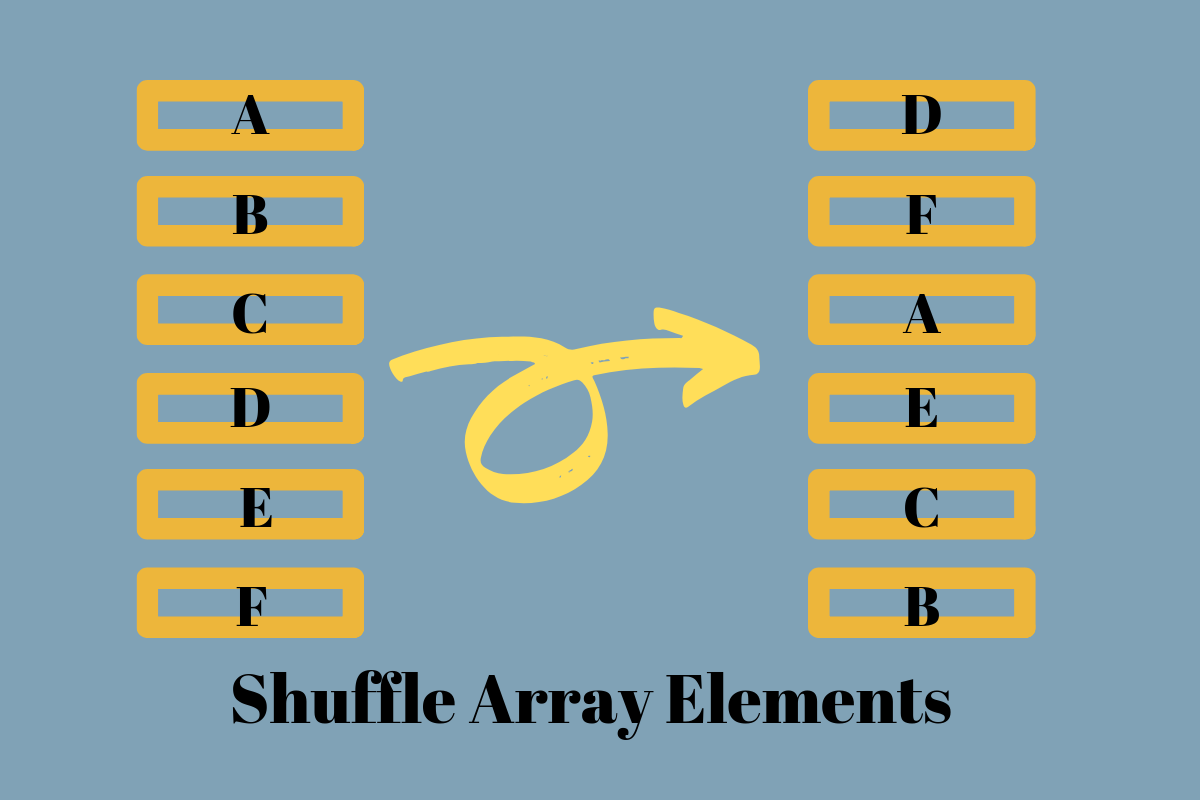- Log in to:
- Community
- DigitalOcean
- Sign up for:
- Community
- DigitalOcean

There are two ways to shuffle an array in Java.
- Collections.shuffle() Method
- Random Class
1. Shuffle Array Elements using Collections Class
We can create a list from the array and then use the Collections class shuffle() method to shuffle its elements. Then convert the list to the original array.
package com.journaldev.examples;
import java.util.Arrays;
import java.util.Collections;
import java.util.List;
public class ShuffleArray {
public static void main(String[] args) {
Integer[] intArray = { 1, 2, 3, 4, 5, 6, 7 };
List<Integer> intList = Arrays.asList(intArray);
Collections.shuffle(intList);
intList.toArray(intArray);
System.out.println(Arrays.toString(intArray));
}
}
Output: [1, 7, 5, 2, 3, 6, 4] Note that the Arrays.asList() works with an array of objects only. The concept of autoboxing doesn’t work with generics. So you can’t use this way to shuffle an array for primitives.
2. Shuffle Array using Random Class
We can iterate through the array elements in a for loop. Then, we use the Random class to generate a random index number. Then swap the current index element with the randomly generated index element. At the end of the for loop, we will have a randomly shuffled array.
package com.journaldev.examples;
import java.util.Arrays;
import java.util.Random;
public class ShuffleArray {
public static void main(String[] args) {
int[] array = { 1, 2, 3, 4, 5, 6, 7 };
Random rand = new Random();
for (int i = 0; i < array.length; i++) {
int randomIndexToSwap = rand.nextInt(array.length);
int temp = array[randomIndexToSwap];
array[randomIndexToSwap] = array[i];
array[i] = temp;
}
System.out.println(Arrays.toString(array));
}
}
Output: [2, 4, 5, 1, 7, 3, 6]
Thanks for learning with the DigitalOcean Community. Check out our offerings for compute, storage, networking, and managed databases.
About the author
Java and Python Developer for 20+ years, Open Source Enthusiast, Founder of https://www.askpython.com/, https://www.linuxfordevices.com/, and JournalDev.com (acquired by DigitalOcean). Passionate about writing technical articles and sharing knowledge with others. Love Java, Python, Unix and related technologies. Follow my X @PankajWebDev
Still looking for an answer?
Your second implementation is not uniformly random (for example, the sequence 7,1,2,3,4,5,6 is abnormally unlikely to be generated) use the Fisher-Yates algorithm instead.
- Shuffle Guy
The second one is wrong. It will end up to non uniform distribution.
- Peter
I also noticed that issue… implementation 2 will not give a uniform shuffle. The random index for the swap should be picked in the range of already shuffled items only.
- Reader
- Table of contents
- 1\. Shuffle Array Elements using Collections Class
- 2\. Shuffle Array using Random Class
Deploy on DigitalOcean
Click below to sign up for DigitalOcean's virtual machines, Databases, and AIML products.
Become a contributor for community
Get paid to write technical tutorials and select a tech-focused charity to receive a matching donation.
DigitalOcean Documentation
Full documentation for every DigitalOcean product.
Resources for startups and SMBs
The Wave has everything you need to know about building a business, from raising funding to marketing your product.
Get our newsletter
Stay up to date by signing up for DigitalOcean’s Infrastructure as a Newsletter.
New accounts only. By submitting your email you agree to our Privacy Policy
The developer cloud
Scale up as you grow — whether you're running one virtual machine or ten thousand.
Get started for free
Sign up and get $200 in credit for your first 60 days with DigitalOcean.*
*This promotional offer applies to new accounts only.
